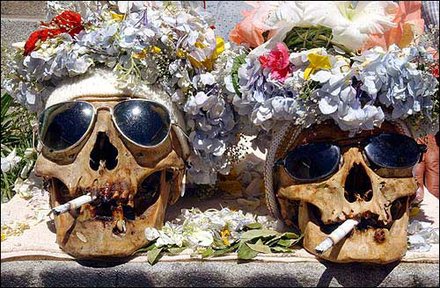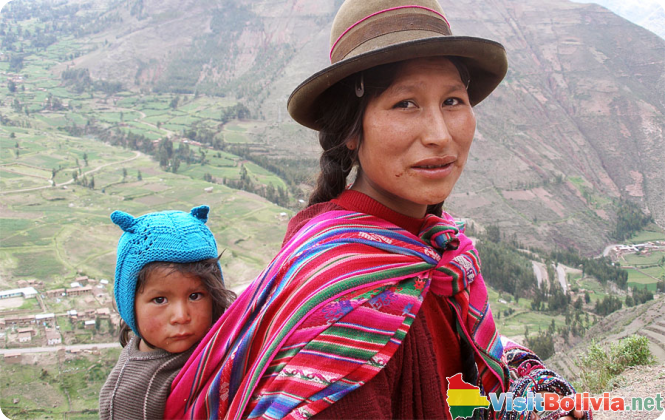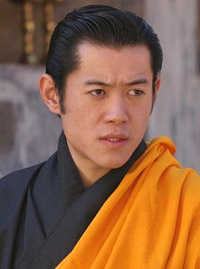I usually do the bread first, but this time I switched up. The
main course I made is called silpancho, and the recipe I had actually broke it
down into prep work that could be done the day before and the actual cooking.
Here are the basic parts of silpancho:
The beef I used was an angus steak that I cut into thin
strips, covered it with adobo seasoning (I made my own out of sea salt, onion
powder, garlic power, black pepper, chili powder, smoked paprika, and cumin.
After that, I coated it in bread crumbs and put it in the refrigerator. Later
on, I took it out and fried it in a skillet. (I cheated on the salsa that tops
the meat. I already had a jar of black bean and corn salsa.)
 |
| Fried beef strips. Mmmm... |
I took four golden potatoes, peeled them and boiled them
whole for 20 minutes. Then I took them out and put them in the refrigerator to
cool. After a couple of hours, I sliced them and fried them until they were
just turning golden in color.
 |
| I might just eat these leftovers for breakfast. Too bad I don't have any sausage gravy. |
Then I steamed some white rice as directed and put it in the
refrigerator to cool. Later on, I fried the rice using the leftover oil from
frying the potatoes and added some diced red bell pepper and green bell pepper
and a little bit of cilantro in with the rice.
 |
| Fried rice. Way better with peppers in it. Of course, that's true for everything. |
It also called for fried eggs. Now, I am more of less
proficient – almost professional, if you will – at scrambled eggs, but other
methods somewhat elude me. Not because I can’t do it, it’s just that I’m more
of a scrambled egg person and never saw a need to make them any other way. If
it’s not broke, you need to break it and scramble it hard (with garlic powder, cumin,
and chopped green onions). But it turns out I did a good job, according to my
husband, my local expert on how to fry an egg.
Between the prep work for the silpancho and actually frying
everything, I made the bread. The bread I made was tawa-tawas. It actually
seems more of a pastry to me. After making the dough and letting it rest for
about 10 minutes, you roll out the dough to being about a quart of an inch
thick. I took a pizza cutter and rolled it across the dough at angles to make
diamond shapes (or as the recipe calls it: rhombus-shaped. I was actually
surprised my seven-year-old knew what a rhombus was!) Then you take the dough
and fry it. When it starts to puff up,
you turn it once and remove when it turns golden. I topped the pieces with
powdered sugar and my sassafras-infused honey.
It was really, really good. Definitely a win with the whole family!
 |
| If you want to know what heaven tastes like, it's pretty close. |
And as a side dish to add variety to this fried food
extravaganza that would make any Texan approve, I went with a hominy-honey
mustard salad. Now, hominy is one of
those foods that gagged me as a child. But then again, my dad would just open
the can, heat it up in a pot and serve it. That being said, it’s understandable
why I didn’t like it. For this salad, I took the hominy and put it in a bowl
with water and some sugar and heated it in the microwave for three minutes.
Then I chopped up a quarter cup of red bell pepper and a quarter cup of green
bell pepper and added it to a bowl. I threw in the hominy plus a tablespoon of
mayonnaise (I hate mayonnaise; I use the fake stuff, Miracle Whip), a
tablespoon of yellow mustard and a little bit of honey and stirred everything
together. It reminded me of potato salad, and I was surprised that hominy can
actually go down my throat without setting off a gag reflex. What a difference that 20 years and a good
recipe can make.
 |
| One of the best meals I've made so far. This one is going in the top ten. The picture makes me drool. |
I’m sure that my heart will thank me when I wake up from my
heart attack caused by all the fried foods. But it was so good. Really it was.
And it’s not like I eat like this every day. I once had someone tell me that I
must spend a lot of money on all of these meals, but in actuality, I spend no
more than other meals. Of course, it depends on if I had to find a hard-to-find
or more expensive ingredient or not. But for something like this, the
ingredients were simple. In many countries, people don’t have the means to buy
expensive ingredients for their meals; they have to use what they have
available. And this meal is another perfect example of that. There was enough
variety in color, flavors, and in texture that kept the meal interesting and
filling. It is these moments spent with family over good food that I cherish and
am continually thankful for.
Up next: Bosnia and Herzegovina
.jpg)





































